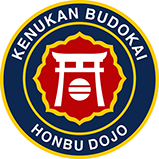
KENUKAN ACADEMY
"Modern Techniques & Tactics - Traditional Respect & Values"

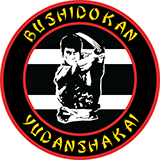
Grappling - Ju-Jutsu / Judo / Catch Wrestling
Home / Grappling
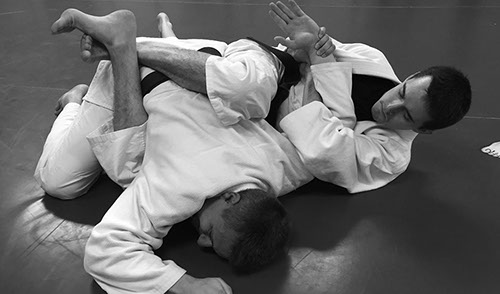
Sensei Travis Boggs Demonstrating Gyaku Ude Garami 逆腕絡み
Kenukan Academy's 拳友館 grappling training is a blend of Japanese Ju-Jutsu, Judo, Brazillian Jiu-Jitsu, Catch Wrestling, & Russian Sambo. Emphasizing strong fundamentals and positional control, Kenukan teaches a balanced curriculum of pins (osae komi waza 押え込技), locks (kansetsu waza 関節技), chokes (shime waza 絞め技), & throws (nage waza 投げ技) - all of which rely on proper leverage & timing, rather than strength. Classes are structured in a systematic and progressive manner - starting with stretches, then breakfalls (ukemi 受け身), reflex development drills, pin resistance, technique / combination study, and finally, randori 乱取り (free practice / rolling). Although some students choose to compete in state, regional, national, & international competitions, the focus is always on techniques, tactics, & strategies that are effective in real life self-defense situations.
Kenukan Academy believes in the experiential education philosophy. In experimental education, students are given the opportunity to apply their knowledge and skills by making connections to real world applications. Infused with the teaching methodology practiced in many medical schools, it believes in the "See one, Do one, Teach one" process of learning. This teaches students (through competitive resistance) how to fine tune technique and improve critical decision making skills. All instructors go through an extensive certification course that improves their ability to effectively transmit the course material in a clear and detailed manner.
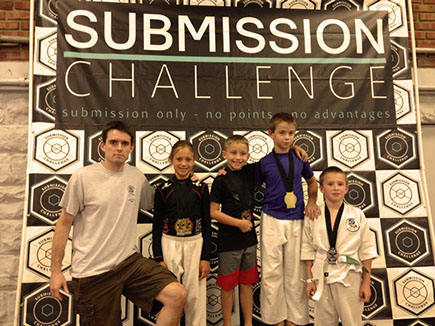
Kenukan Academy Kids Submission Challenge Team - 2014
(Lt - Rt) Sensei Boggs - Coach, Emma Thomas, Max Steckenrider,
Truman Harp, & Thomas Harp
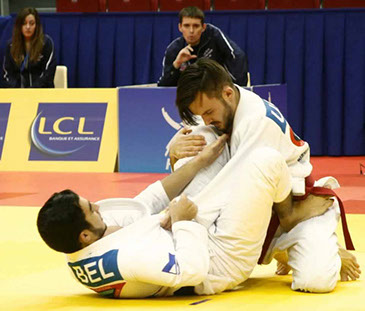
Team USA - Paris, France - 2014
Kenukan Student Bryce Allenbrand (Competitor) & Coach Boggs
Sensei Travis Boggs, Kenukan Budokai President, Bushidokan Yudanshakai Board of Directors Chairman, and Kenukan Academy Chief Instructor, holds black belt certification in several styles of Ju-Jutsu - including both Kenukan-Ryu & Bushidokan-Ryu. In 2014, he was selected as one of two coaches that led TEAM USA in the Ju-Jitsu International Federation's (JJIF) World Championship held in Paris, France. In 2015 & 2016, he coached several US athletes that medaled in the USJJO's International Open & National Tournaments held in Las Vegas, Nevada (which were affiliated with the UFC International Fight Week). In 2016, Sensei Boggs was selected as the Head Coach for TEAM USA that competed in the JJIF World Championship held in Wroclaw, Poland. In 2018, he was selected to coach the US TEAM that competed in Malmö, Sweden. Besides his abilities as a coach, his expertise as an instructor is second to none. In 2011, he was asked to conduct the grappling section for the 1st Bushidokan-Ryu Symposium, which was attended by such notable martial artists as Shawn Harrison, an alternate on the 1980 US Olympic Judo Team. According to Shawn, "Travis Boggs' presentation and knowledge was impressive! He taught one of the best grappling seminars that I have ever attended!" Another student, Jerry Neer, cousin to UFC veteran, Josh Neer, was noted as saying, "Growing up in Iowa, I’ve seen and worked with some of the best wrestlers and submission grappler's in our country. Believe me, Travis is the total package!"
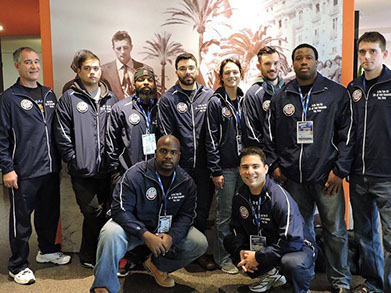
Team USA - Paris, France - 2014
Coaches Travis Boggs & Lance Weimer
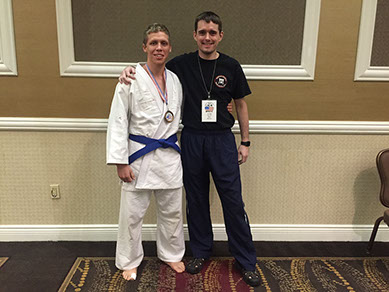
International Ju-Jitsu Open - Las Vegas, NV - 2015
Kenukan Student Nick Meador (Lt) & Coach Travis Boggs (Rt)
Along with teaching weekly at Kenukan Academy, Sensei Boggs serves on the United Society of Ju-Jitsu Organizations' (USJJO) Team Development & International / National Coaching Committees. Kenukan Academy is a USJJO Regional Training Center - responsible for developing athletes for local, national, & international competition. The USJJO is a member of the JJIF, which is the world's leading international Ju-Jitsu body. The JJIF is the only Ju-Jitsu organization recognized by the General Association of International Sports Federations (GAISF) and the International World Games Association (IWGA). The JJIF provides the opportunity for elite athletes from their National Members (USJJO) & affiliated Dojos (Kenukan Academy) to compete in the World Games, which are organized and governed by the IWGA under the patronage of the International Olympic Committee (IOC). Including the United States of America, the JJIF has 81 member countries. Click HERE For More Information About Ju-Jitsu Competition & Training
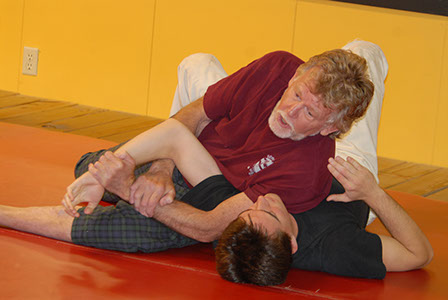
Sensei Harrison (Top) & Sensei Boggs (Bottom) Teaching At Kenukan

Sensei Harrison With Student Josh Barnett (UFC, Pride, Pancrase)
Kenukan Academy Grappling Lineage
As previously mentioned, Kenukan Academy teaches several different disciplines and styles. One of the foundational styles is Bushidokan Ju-Jitsu / Judo (which Sensei Travis Boggs holds a black belt). Bushidokan-Ryu Ju-Jitsu is system developed by Sensei Jim Harrison - known as one of most feared fighters from the famed “Blood & Guts” era of the 1960’s. In the mid 1950‘s, while living in St. Louis, MO, Sensei Harrison began his formal grappling training at the St. Louis Judo Institute, under the instruction of Sensei Bob Kurth, a WWII Combat Veteran. After Kurth, Sensei Harrison continued his Judo / Ju-Jutsu training under Bob Whelan (Kodokan Judo & Wrestling) and Dr. Sung Jae Park (Korean Yudo Association). Once earning his Black Belt in Judo (old school style which emphasized BOTH standing throws & ground techniques), Sensei Harrison became known as one of the midwest’s toughest competitors & sought after teachers. In the 1960‘s, he fought his way to become a three-time regional AAU Judo Champion. In 1964, after moving to Kansas City, Sensei Harrison & Jim Lindell (his training partner & dojo co-owner) hosted the Korean Olympic Yudo (Judo) Team. In the late 60's, the AAU instituted a professional rule, which classified those that operated dojos as professionals. Therefore, dojo owners, such as Sensei Harrison, were not allowed to compete in an amateur organization, such as the AAU. Disappointed with the rejection, Sensei Harrison decided to focus on Karate & Kickboxing competition - which provided him the opportunity to slam-dunk more Karate fighters on the wood floor with throws. However, his Judo students continued to show excellence in both competition & instruction. Harry Parker, one of Bushidokan's early Judo / Ju-Jitsu Black Belts, became a 7-time AAU Judo Jr. Division Champion, 3-time AAU Judo Outstanding Player, & AAU Athlete of The Year. Sensei Harrison's son, Shawn Harrison, developed a formidable reputation in his own right as a Judo-ka and wrestler. Shawn was undefeated in 7 years of AAU Judo competition and was a 3-time AAU Judo Outstanding Player. In 1980, Shawn was selected to be on the US Olympic Judo Team. However, the United States boycotted the Olympics that year, resulting in the team being unable to compete. In the 1990's, after moving to Missoula, MT, UFC / Pride / Affliction champion, Josh Barnett, trained, studied, and taught at Sensei's dojo. In 1999, showing his love for Judo and a tolerance for pain, Sensei Harrison won the National Masters Championships, and placed 3rd in the World Master Athlete Judo Championships (despite tearing the cartilage and ligaments in his left knee and re-injuring his right knee - which kept him from any training (except one light 15 minute workout) to prepare for the World Games). In the early 2000's, Sensei Harrison's Sakura Warrior Arts Dojo (Missoula, MT) affiliated with the Flavio Behring Brazilian Jiu-Jitsu Association - thus establishing a continued exchange of ideas, techniques, & methodologies.
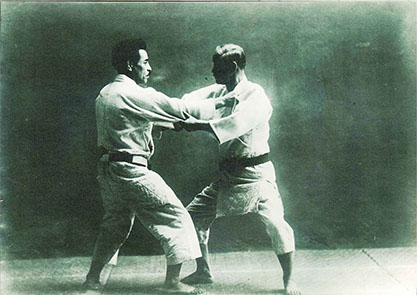
Dr. Jigoro Kano 嘉納治五郎 - Founder of Judo (Right)
Brief History of Ju-Jutsu 柔術 & Judo 柔道
Prior to 1882, the bare-handed fighting taught to the Japanese Samurai (warriors) was known as Ju-Jutsu 柔術 (gentle art / skill). Ju-Jutsu was a means of secondary defense on the battle field - if one’s sword or primary weapon was dropped, damaged, or inaccessible. Ju-Jutsu eventually became “stylized”. These styles (ryus 流) began to specialize in certain techniques that the masters who taught them were known for. Some styles focused on striking and kicking, some on throwing, and others on ground fighting. When the military need for Ju-Jutsu was diminished due to the replacement of the Samurai fighting arts for western firearms, cannons, and tactics, many Ju-Jutsu masters opened their own dojos 道場 (training halls). Ju-Jutsu, which was once reserved only for the Bushi 武士 (warrior) class, was now open to the general population.
A young scholar, Jigoro Kano 嘉納治五郎, who had studied several styles of Ju-Jutsu, including Tenjin Shinyo-Ryu Ju-Jutsu 天神真楊流柔術 and Kito-Ryu Ju-Jutsu 起倒流柔術, saw the need to create a new blend that drew from the best techniques that each style had to offer. He also had the intent to create something that could be taught on a mass scale to the Japanese people as a means to preserve the rich cultural heritage, values, and ethics contained in Ju-Jutsu - not to mention the physical, spiritual, and self-defense benefits that the art had to offer. Kano systematically created his new hybrid Ju-Jutsu, which he called Judo 柔道 (gentle way), and made key additions that would lead to the art’s success. Many of the old traditions found with the Samurai took on modern manifestations. For example, he introduced the Judo-gi 柔道着 (heavyweight cloth top and lightweight pants) and the obi 帯 (belt) in order to replace the armor clad clothing that was worn on the battle field. In addition, he organized an official ranking system in order to classify students according to skill level. Thus, the kyu 級 (class) and dan 段 (degree) system was developed, along with the corresponding belt colors of white, brown, and black. He also eliminated or modified the dangerous techniques that could not be safely applied in the dojo. Many of the techniques were also changed as to rely more on proper leverage rather than strength. What resulted was a set of throws that involved the use of the hands (te 手), hip (koshi 腰), legs (ashi 足), back sacrifice (ma sutemi 真捨身), side sacrifice (yoko sutemi 橫捨身), plus, controlling pins (osae komi 押え込), joint locks (kansetsu 関節), chokes (shime 絞め), and striking / kicking techniques (atemi 当て身) (for self-defense practice only). These techniques were developed and polished through the means of kata 形 (formal practice), randori 乱取り(free sparring), and shiai 試合 (contest). Rules were established in order to allow for safe practice, yet providing the opportunity to develop real fighting ability through rugged resistance. In many ways, Kano replaced the battle field with the tatami 畳 (mat). It did not take long before Kano’s dojo, called the Kodokan 講道館, began to produce some of the finest Ju-Jutsu fighters in all of Japan.
Kano's Judo spread throughout Japan and gained prominence by defeating practitioners of other styles in shiais (tournaments). During the early 1900's, Kano dispatched Judo ambassadors around the world to help spread the art. The result was Judo taking shape in such places as Europe, America, & Brazil (where it became known as Brazilian Jiu-Jitsu). By 1956, Judo had enough international participants to organize the first World Championships. In 1964, Japan hosted the Olympics and chose Judo as their selection for entry into The Games. Once Judo became an Olympic Sport, it spread incredibly fast! However, with the explosion in popularity of Karate in the late 1960's and early 1970's, Judo lost a lot of participation and new students. However, in 1993, after the stunning success of Royce Gracie in the early days of the UFC (Ultimate Fighting Championships), an interest in grappling began to come back. Now, people all over the world study Judo, Ju-Jutsu, & Wrestling, along side striking arts, in order to become well-balanced practitioners of self-defense and street combat.
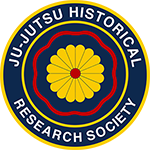
For more information about the history of Ju-Jutsu, visit the
Ju-Jutsu Historical Research Society Website
(Sponsored by the Kenukan Budokai)
220 West Cedar St. • Olathe, KS • 66061 • Tel: 913.782.5425 • E-Mail: kenukan@aol.com
© 2022 KENUKAN ACADEMY. ALL RIGHTS RESERVED.
